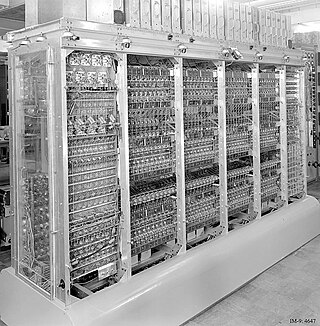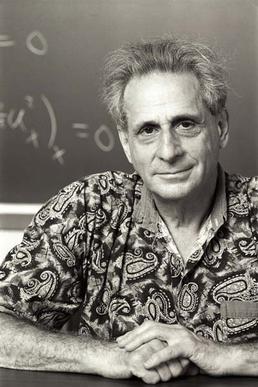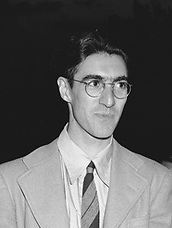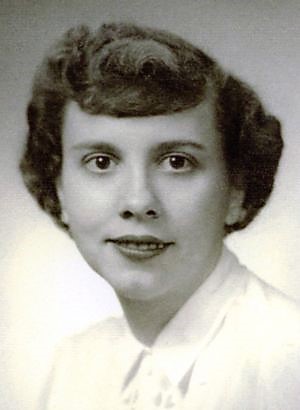This article has multiple issues. Please help improve it or discuss these issues on the talk page . (Learn how and when to remove these template messages)
|
The following is a timeline of scientific computing, also known as computational science.
This article has multiple issues. Please help improve it or discuss these issues on the talk page . (Learn how and when to remove these template messages)
|
The following is a timeline of scientific computing, also known as computational science.
This decade marks the first major strides to a modern computer, and hence the start of the modern era.

John von Neumann was a Hungarian and American mathematician, physicist, computer scientist, engineer and polymath. He had perhaps the widest coverage of any mathematician of his time, integrating pure and applied sciences and making major contributions to many fields, including mathematics, physics, economics, computing, and statistics. He was a pioneer in building the mathematical framework of quantum physics, in the development of functional analysis, and in game theory, introducing or codifying concepts including cellular automata, the universal constructor and the digital computer. His analysis of the structure of self-replication preceded the discovery of the structure of DNA.

Numerical analysis is the study of algorithms that use numerical approximation for the problems of mathematical analysis. It is the study of numerical methods that attempt to find approximate solutions of problems rather than the exact ones. Numerical analysis finds application in all fields of engineering and the physical sciences, and in the 21st century also the life and social sciences, medicine, business and even the arts. Current growth in computing power has enabled the use of more complex numerical analysis, providing detailed and realistic mathematical models in science and engineering. Examples of numerical analysis include: ordinary differential equations as found in celestial mechanics, numerical linear algebra in data analysis, and stochastic differential equations and Markov chains for simulating living cells in medicine and biology.

Stanisław Marcin Ulam was a Polish Jewish mathematician, nuclear physicist and computer scientist. He participated in the Manhattan Project, originated the Teller–Ulam design of thermonuclear weapons, discovered the concept of the cellular automaton, invented the Monte Carlo method of computation, and suggested nuclear pulse propulsion. In pure and applied mathematics, he proved some theorems and proposed several conjectures.

Monte Carlo methods, or Monte Carlo experiments, are a broad class of computational algorithms that rely on repeated random sampling to obtain numerical results. The underlying concept is to use randomness to solve problems that might be deterministic in principle. The name comes from the Monte Carlo Casino in Monaco, where the primary developer of the method, physicist Stanislaw Ulam, was inspired by his uncle's gambling habits.

Computational physics is the study and implementation of numerical analysis to solve problems in physics. Historically, computational physics was the first application of modern computers in science, and is now a subset of computational science. It is sometimes regarded as a subdiscipline of theoretical physics, but others consider it an intermediate branch between theoretical and experimental physics — an area of study which supplements both theory and experiment.

The MANIAC I was an early computer built under the direction of Nicholas Metropolis at the Los Alamos Scientific Laboratory. It was based on the von Neumann architecture of the IAS, developed by John von Neumann. As with almost all computers of its era, it was a one-of-a-kind machine that could not exchange programs with other computers. Metropolis chose the name MANIAC in the hope of stopping the rash of silly acronyms for machine names, although von Neumann may have suggested the name to him.
Nicholas Constantine Metropolis was a Greek-American physicist.

Martin David Kruskal was an American mathematician and physicist. He made fundamental contributions in many areas of mathematics and science, ranging from plasma physics to general relativity and from nonlinear analysis to asymptotic analysis. His most celebrated contribution was in the theory of solitons.
Quantum Monte Carlo encompasses a large family of computational methods whose common aim is the study of complex quantum systems. One of the major goals of these approaches is to provide a reliable solution of the quantum many-body problem. The diverse flavors of quantum Monte Carlo approaches all share the common use of the Monte Carlo method to handle the multi-dimensional integrals that arise in the different formulations of the many-body problem.
Monte Carlo N-Particle Transport (MCNP) is a general-purpose, continuous-energy, generalized-geometry, time-dependent, Monte Carlo radiation transport code designed to track many particle types over broad ranges of energies and is developed by Los Alamos National Laboratory. Specific areas of application include, but are not limited to, radiation protection and dosimetry, radiation shielding, radiography, medical physics, nuclear criticality safety, detector design and analysis, nuclear oil well logging, accelerator target design, fission and fusion reactor design, decontamination and decommissioning. The code treats an arbitrary three-dimensional configuration of materials in geometric cells bounded by first- and second-degree surfaces and fourth-degree elliptical tori.
John Robert Pasta was an American computational physicist and computer scientist who is remembered today for the Fermi–Pasta–Ulam–Tsingou experiment, the result of which was much discussed among physicists and researchers in the fields of dynamical systems and chaos theory, and as the head of the department of Computer Science at the University of Illinois at Urbana-Champaign from 1964 to 1970.
In physics, the Fermi–Pasta–Ulam–Tsingou (FPUT) problem or formerly the Fermi–Pasta–Ulam problem was the apparent paradox in chaos theory that many complicated enough physical systems exhibited almost exactly periodic behavior – called Fermi–Pasta–Ulam–Tsingou recurrence – instead of the expected ergodic behavior. This came as a surprise, as Enrico Fermi, certainly, expected the system to thermalize in a fairly short time. That is, it was expected for all vibrational modes to eventually appear with equal strength, as per the equipartition theorem, or, more generally, the ergodic hypothesis. Yet here was a system that appeared to evade the ergodic hypothesis. Although the recurrence is easily observed, it eventually became apparent that over much, much longer time periods, the system does eventually thermalize. Multiple competing theories have been proposed to explain the behavior of the system, and it remains a topic of active research.
The Monte Carlo trolley, or FERMIAC, was an analog computer invented by physicist Enrico Fermi to aid in his studies of neutron transport.
"Equation of State Calculations by Fast Computing Machines" is a scholarly article published by Nicholas Metropolis, Arianna W. Rosenbluth, Marshall N. Rosenbluth, Augusta H. Teller, and Edward Teller in the Journal of Chemical Physics in 1953. This paper proposed what became known as the Metropolis Monte Carlo algorithm, which forms the basis for Monte Carlo statistical mechanics simulations of atomic and molecular systems.

Robert Davis Richtmyer was an American physicist, mathematician, educator, author, and musician.
Francis Harvey Harlow was an American theoretical physicist known for his work in the field of fluid dynamics. He was a researcher at Los Alamos National Laboratory, Los Alamos, New Mexico. Harlow is credited with establishing the science of computational fluid dynamics (CFD) as an important discipline.
The following timeline starts with the invention of the modern computer in the late interwar period.

Mary Tsingou is an American physicist and mathematician of Greek-Bulgarian descent. She was one of the first programmers on the MANIAC computer at Los Alamos National Laboratory and is best known for having coded the celebrated computer experiment with Enrico Fermi, John Pasta, and Stanislaw Ulam. This experiment became an inspiration for the fields of chaos theory and scientific computing, and was a turning point in soliton theory.
The following is a timeline of numerical analysis after 1945, and deals with developments after the invention of the modern electronic computer, which began during Second World War. For a fuller history of the subject before this period, see timeline and history of mathematics.
This is a timeline of key developments in computational mathematics.
{{cite journal}}: |volume= has extra text (help). Accessed 5 May 2012.